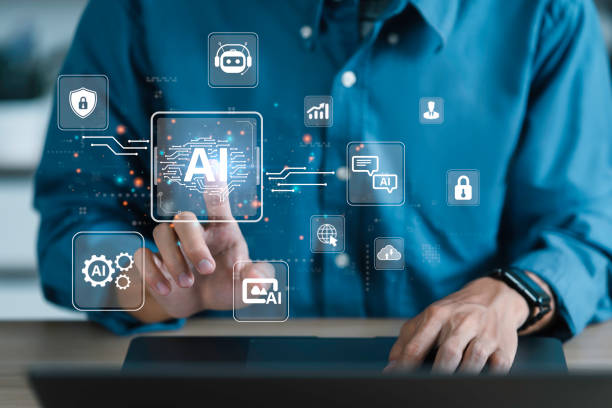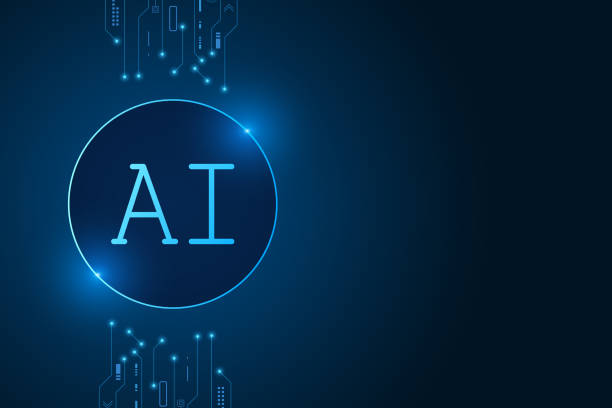What is an AI Robot and How Does it Work?
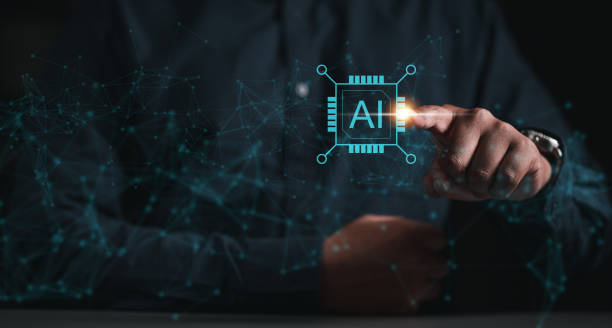
What is an AI Robot and How Does it Work?
#AI_Robot (Artificial Intelligence Robot) is a combination of two key concepts: #Artificial_Intelligence and #Robotics.
Simply put, an AI robot is a machine capable of performing tasks that typically require human intelligence.
These tasks include learning, reasoning, problem-solving, understanding natural language, and pattern recognition.
Artificial Intelligence in robots allows them to interact with their environment, make decisions, and act independently.
The way an AI robot works generally involves the following steps:
- Receiving Information: The robot gathers information from its surrounding environment through various sensors (such as cameras, microphones, touch sensors, etc.).
- Processing Information: The collected information is processed by artificial intelligence algorithms.
These algorithms can include neural networks, machine learning algorithms, and other AI methods. - Decision-Making: After processing the information, the robot makes a decision based on its knowledge and reasoning.
- Execution: The robot executes its decision using its actuators (such as motors, arms, and other mechanical parts).
- Learning: The robot can learn from its experiences and improve its performance.
This learning can be done through various methods such as reinforcement learning.
Due to its capabilities in automating tasks, improving efficiency and accuracy, and solving complex problems, AI robots are used in various industries.
Did you know that your customers’ first impression of your company is your website? Multiply your business’s credibility with a powerful corporate website from Rasaweb!
✅ Exclusive and eye-catching design tailored to your brand
✅ Improved user experience and increased customer attraction
⚡ Get free consultation!
Types of AI Robots: Comprehensive Review
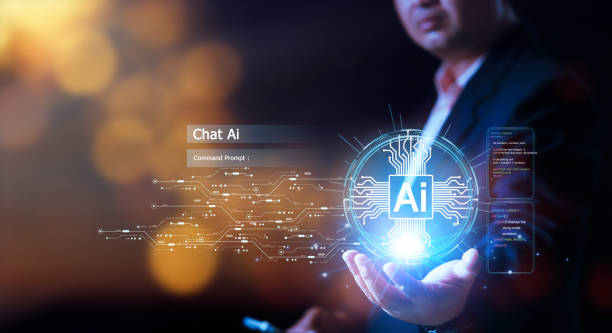
Types of AI Robots: Comprehensive Review
AI robots can be classified based on various criteria.
One of the most common methods of classification is based on the type of application and the task that the robot performs.
Based on this, the following types can be named:
- Industrial Robots: These robots are designed to perform repetitive and heavy tasks in production lines and factories.
They can perform tasks such as welding, painting, packaging, and assembling parts. - Service Robots: These robots are designed to provide services to humans.
They can perform tasks such as cleaning, delivering goods, caring for the elderly and children, and providing information. - Medical Robots: These robots are designed to assist doctors and nurses in performing surgery, diagnosing diseases, and rehabilitating patients.
- Military Robots: These robots are designed to perform dangerous and difficult tasks on the battlefield.
They can perform tasks such as reconnaissance, bomb disposal, and transporting equipment. - Space Robots: These robots are designed to explore space and conduct scientific research in dangerous and remote environments.
- Home Robots: These robots are designed to help people with daily tasks at home.
They can perform tasks such as cleaning, cooking, and caring for pets.
In addition, robots can also be classified based on their level of intelligence and learning capabilities.
Some robots are only capable of performing pre-determined tasks, while others can learn from their experiences and improve their performance.
AI robots with high learning and adaptability provide wider possibilities.
Amazing Applications of AI Robots in Various Industries
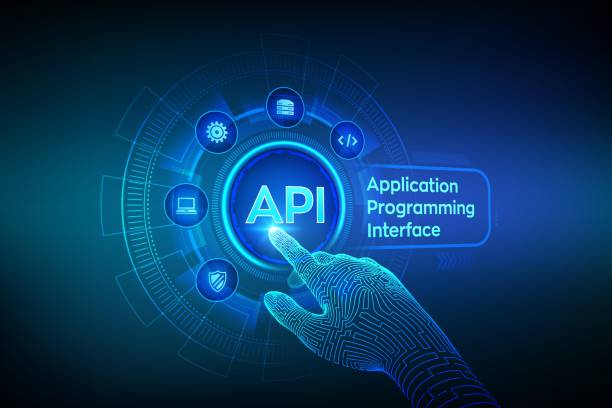
Amazing Applications of AI Robots in Various Industries
AI robots are rapidly penetrating various industries and offering diverse applications.
Here are some of their amazing applications:
- Manufacturing Industry: AI robots can be used in production lines to perform repetitive, heavy, and dangerous tasks.
This increases production speed, reduces errors, and improves safety. - Healthcare Industry: Surgical robots can perform complex surgeries with greater precision and delicacy.
Rehabilitation robots can help patients improve movement and physical function.
Pharmacist robots can prepare patients’ required medications with greater accuracy and speed. - Transportation Industry: Self-driving robots can increase road safety and reduce traffic.
Delivery robots can deliver online orders to customers quickly and accurately. - Customer Service Industry: Chatbot robots can answer customer questions and solve their problems.
Guide robots can guide customers in stores and shopping centers. - Agriculture Industry: Farmer robots can automatically harvest crops, eliminate weeds, and irrigate the land.
AI robots, by providing innovative solutions, help improve efficiency, reduce costs, and increase quality in various industries.
This emerging technology has high potential to reshape industries and improve human lives.
| Industry | Application of AI Robot |
|---|---|
| Manufacturing | Automation of production lines, quality control |
| Healthcare | Robotic surgery, rehabilitation |
| Transportation | Self-driving, delivery of goods |
| Customer Service | Chatbots, customer guide |
| Agriculture | Crop harvesting, irrigation |
Advantages and Disadvantages of Using AI Robots
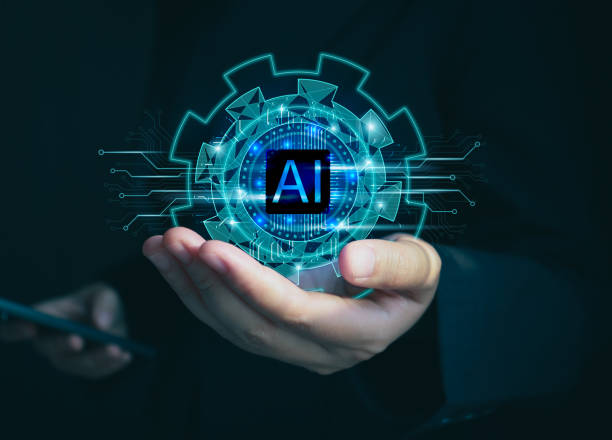
Advantages and Disadvantages of Using AI Robots
Using AI robots has many advantages, but it also has disadvantages that must be considered.
Advantages
- Increased Productivity: Robots can perform tasks faster and more accurately than humans.
- Reduced Costs: Robots can reduce labor costs, errors, and accidents.
- Improved Safety: Robots can perform dangerous tasks instead of humans.
- Performing Repetitive Tasks: Robots can perform repetitive and tedious tasks without fatigue and reduced accuracy.
- Access to Dangerous Environments: Robots can work in dangerous environments such as space, the deep sea, and areas contaminated with radiation.
Disadvantages
- High Initial Cost: Purchasing and setting up robots can be costly.
- Need for Expertise: Setting up, maintaining, and repairing robots requires expertise and technical knowledge.
- Job Loss: The use of robots can lead to job loss for some people.
- Ethical Concerns: Ethical issues related to the use of robots, such as privacy, security, and accountability, must be considered.
- Dependence on Technology: Over-reliance on robots can lead to vulnerability to failures and cyber attacks.
By considering the advantages and disadvantages of using AI robots, more informed decisions can be made about using this technology and making the best use of its potential.
Is your online sales not as expected? With Rasaweb, solve the problem of low sales and poor user experience forever!
✅ Increase the conversion rate of visitors to customers
✅ Create an enjoyable user experience and increase customer trust
⚡ Take action now to receive free consultation!
Challenges Facing the Development and Use of AI Robots
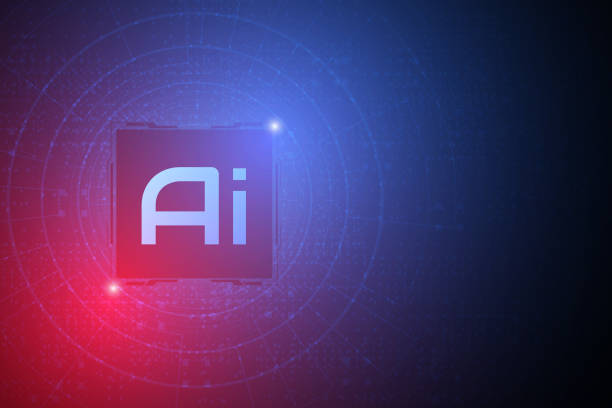
Challenges Facing the Development and Use of AI Robots
The widespread development and use of AI robots faces numerous challenges that must be addressed to fully exploit this technology.
- Technical Challenges
- Need for More Advanced Algorithms: To perform more complex tasks, robots need more advanced AI algorithms.
- Improvement of Sensors: Robot sensors must be more accurate, reliable, and resistant.
- Development of High-Capacity Batteries: Robots need high-capacity batteries for long-term operation.
- Increasing Processing Speed: Robots must be able to process information faster.
- Ethical Challenges
- Privacy: Robots can collect a lot of information about people, which can violate their privacy.
- Security: Robots can be cyberattacked and used for malicious purposes.
- Accountability: In the event of an accident caused by a robot, determining accountability is difficult.
- Bias: AI algorithms can be biased, leading to unfair decisions.
- Social Challenges
- Job Loss: The use of robots can lead to job loss for some people.
- Inequality: Access to robotic technology can exacerbate social inequalities.
- Changing the Role of Humans: The use of robots can change the role of humans in society.
- Legal Challenges
- Laws and Regulations: Laws and regulations regarding the use of robots must be updated.
- Standards: Standards for the safety and performance of robots must be established.
By addressing these challenges, the path can be paved for the responsible and beneficial development and use of AI robots.
The Future of AI Robots: Predictions and Possibilities

The Future of AI Robots: Predictions and Possibilities
The future of AI robots is bright and full of potential.
With continuous advances in artificial intelligence, robotics, and other related technologies, robots are expected to play an increasingly important role in our lives in the future.
Some predictions and possibilities about the future of robots include:
- Expansion of Applications: Robots will be used in more industries and fields.
- Increased Intelligence: Robots will become smarter and capable of performing more complex tasks.
- Improved Human Interaction: Robots will be able to interact more naturally and effectively with humans.
- Development of Self-Aware Robots: It is likely that self-aware and sentient robots will be developed in the future.
- Integration of Robots into Daily Life: Robots will be increasingly integrated into our daily lives, helping us with various tasks.
- Impact on the Labor Market: The use of robots can have a significant impact on the labor market, leading to the creation of new jobs and the loss of old jobs.
- Ethical Concerns: With the advancement of robots, ethical concerns related to privacy, security, and accountability will increase.
AI robots, as a transformative technology, have high potential to improve human lives and solve global problems.
However, to fully exploit this potential, the challenges facing the development and use of robots must be addressed and used responsibly and ethically.
Read more about the future of artificial intelligence
The Impact of AI Robots on the Labor Market: Opportunities and Threats
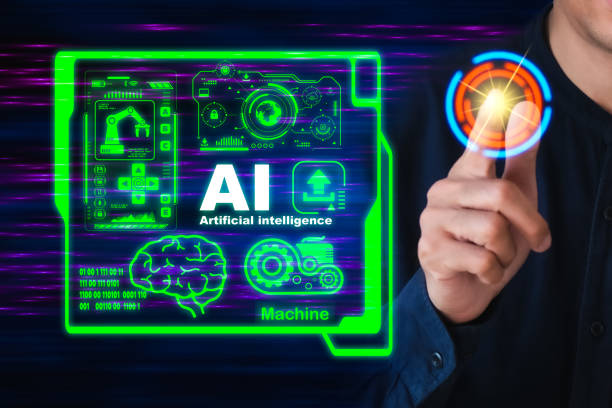
The Impact of AI Robots on the Labor Market: Opportunities and Threats
The entry of AI robots into the labor market brings both opportunities and threats.
Understanding these impacts is essential to prepare for adapting to future changes.
Opportunities
- Creating New Jobs: The development, production, maintenance, and repair of robots require skilled labor, which will lead to the creation of new jobs.
- Increasing Productivity: Robots can increase productivity and contribute to economic growth.
- Improving Working Conditions: Robots can perform dangerous, heavy, and repetitive tasks, improving working conditions for humans.
- Focusing on Soft Skills: With the automation of routine tasks, humans can focus on soft skills such as creativity, problem-solving, and critical thinking.
- Access to Information and Education: AI robots can increase access to information and education.
Threats
- Job Loss: Automation of tasks can lead to job loss for some people, especially in routine and repetitive jobs.
- Inequality: People who lack the skills needed to work with robots may face greater challenges in the labor market.
- Need for Retraining: Individuals need retraining and new skills to adapt to changes in the labor market.
- Wage Reduction: Increased labor supply (due to automation) can lead to wage reductions in some jobs.
To reduce threats and exploit the opportunities arising from the entry of AI robots into the labor market, appropriate policies must be adopted in the areas of education, employment, and social support.
Also, individuals must prepare to acquire the skills needed to work in an automated world.
Ethical Considerations in the Design and Use of AI Robots
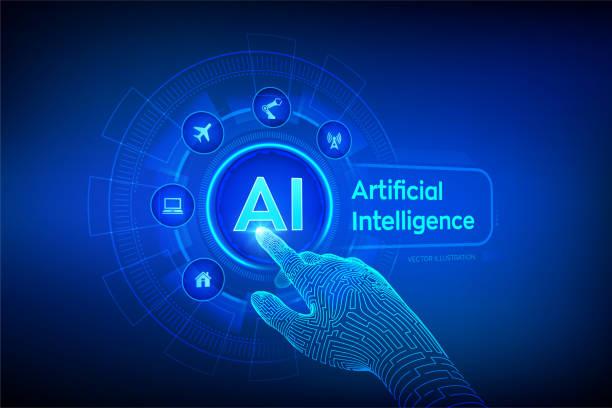
Ethical Considerations in the Design and Use of AI Robots
With the increasing use of AI robots, attention to ethical considerations in their design and use becomes particularly important.
Failure to pay attention to these considerations can lead to serious problems for individuals and society.
Some of the most important ethical considerations in this area include:
- Privacy: Robots can collect a lot of information about people, which must be protected.
- Security: Robots should not be designed in a way that threatens people’s security.
- Accountability: In the event of an accident caused by a robot, it must be determined who is responsible.
- Transparency: The performance of robots should be transparent and explainable.
- Bias: AI algorithms should not be biased, leading to unfair decisions.
- Control: Humans must always have control over robots.
- Purpose: Robots should be designed and used for benevolent and beneficial purposes for society.
| Ethical Issue | Description |
|---|---|
| Privacy | Protection of information collected by the robot |
| Security | Preventing threats to people’s security |
| Accountability | Determining responsibility in case of an accident |
| Transparency | Explainability of robot performance |
| Bias | Avoiding unfair decisions |
By considering these ethical considerations, potential problems can be prevented, and AI robots can be used responsibly and beneficially for society. AI robots can be of great help in everyday life.
Are you tired of missing business opportunities because you don’t have a professional corporate website?
Rasaweb helps you by designing a professional corporate website:
✅ Build a powerful and reliable image of your brand
✅ Turn website visitors into loyal customers
⚡ Get a free consultation right now!
AI Robots in Iran: Current Status and Future Prospects
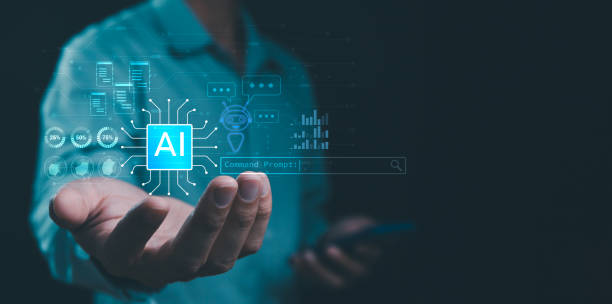
AI Robots in Iran: Current Status and Future Prospects
In Iran, the development and use of AI robots is in its early stages, but there is high potential for growth and progress in this area.
Current Status
- Research Activities: Universities and research centers are conducting research activities in the field of artificial intelligence and robotics.
- Knowledge-Based Companies: Several knowledge-based companies are active in the development of AI robots.
- Limited Application: The use of robots in various industries is limited and is mostly used in the automotive and manufacturing industries.
- Shortage of Specialists: The shortage of specialists in the field of artificial intelligence and robotics is one of the main challenges for the development of this technology in Iran.
- Financial Constraints: Financial constraints and lack of sufficient support for knowledge-based companies are other challenges facing the development of AI robots in Iran.
Future Prospects
- Growth and Development: Given the country’s high potential in the field of artificial intelligence and robotics, this technology is expected to experience significant growth and development in Iran.
- Expansion of Applications: It is predicted that the use of robots will expand in various industries and enter the service and agricultural sectors as well.
- Development of Specialist Workforce: By supporting the education and training of specialists in the field of artificial intelligence and robotics, the shortage of specialists can be compensated for.
- Support for Knowledge-Based Companies: By providing financial facilities and support to knowledge-based companies, the ground can be prepared for the development and commercialization of AI robots in Iran.
- Indigenous Development: Efforts to indigenize artificial intelligence and robotics technologies can help the country become self-sufficient in this field.
With proper planning and investment, Iran can become one of the leading countries in the development and use of AI robots.
Key Points for Optimal Selection and Use of AI Robots

Key Points for Optimal Selection and Use of AI Robots
Optimal selection and use of AI robots requires considering key points, some of which are mentioned here:
- Determine Needs: Before selecting a robot, you must accurately determine your needs. What tasks do you want to assign to the robot? What expectations do you have of the robot?
- Research and Review: Review different types of robots and compare their features, advantages, and disadvantages.
- Choose the Right Robot: Choose the right robot based on your needs and budget.
- Training and Setup: Train the robot properly and set it up correctly.
- Maintenance and Repairs: Maintain the robot regularly and repair it if necessary.
- Optimize Performance: Continuously evaluate the robot’s performance and optimize it if needed.
- Safety: Always consider safety when using the robot.
- Personnel Training: Fully train personnel who work with the robot.
- Update: Regularly update the robot’s software and hardware.
- Continuous Evaluation: Continuously evaluate the robot’s performance and make necessary changes if needed.
By following these key points, you can optimally use AI robots and benefit from their advantages. AI robots are a powerful tool that you can use to achieve your goals if you use them correctly.
Frequently Asked Questions
| Question | Answer |
|---|---|
| What is an AI Robot? | An AI Robot is a machine that is able to understand its environment, reason, learn, and make decisions to perform tasks independently. |
| What is the difference between regular robots and AI robots? | Regular robots perform repetitive tasks based on pre-planning, while AI robots can learn from experience, interact dynamically with the environment, and even behave in a way that resembles human intelligence. |
| What are the main applications of AI robots? | They are used in industries (manufacturing, assembly), medicine (surgery, diagnosis), services (customer support, household), exploration (space, underwater) and many other fields. |
| What technologies are used in the construction of AI robots? | Machine Learning, Computer Vision, Natural Language Processing, Deep Learning, and Robotics are among the key technologies. |
| Can AI robots have emotions? | Currently, robots do not have emotions in the human sense. They can identify and react to emotions, but they do not experience emotions themselves. |
| What are the main challenges in developing AI robots? | Safety, reliability, ethics, autonomy, adaptation to complex environments, and natural interaction with humans are important challenges. |
| How do AI robots learn? | They are usually trained using large amounts of data, machine learning algorithms and deep learning to identify patterns and make decisions. |
| Examples of AI robots in everyday life? | Smart robotic vacuum cleaners, customer support chat robots, self-driving cars, and surgical robots in hospitals. |
| Are AI robots a threat to human jobs? | Some repetitive jobs may be automated, but at the same time, robots can increase productivity and create new jobs in the development, maintenance, and monitoring of these systems. |
| How is the future of AI robots predicted? | They are expected to become smarter, more autonomous, and capable of performing more complex tasks, and to interact more closely with humans in different environments. |
and other services of Rasa Web Advertising Agency in the field of advertising
Smart Custom Software: An effective tool for online growth with the help of using real data.
Smart UI/UX: A new service to increase online growth through marketing automation.
Smart Digital Branding: An effective tool for online growth with the help of attractive user interface design.
Smart Marketing Automation: An effective tool for improving SEO ranking with the help of precise audience targeting.
Smart Data Analysis: Professional optimization for digital branding using SEO-driven content strategy.
And more than hundreds of other services in the field of internet advertising, advertising consulting, and organizational solutions
Internet Advertising | Advertising Strategy | Reportage Advertising
Resources
Artificial Intelligence in Business: A practical guide to implementing artificial intelligence in business
,Smart Robot – Introduction to applications and their future
,Artificial intelligence analyst from data to improve decision making
,Smart robots on the way to launching generations
? Rasavab Digital Marketing Agency, your strategic partner on the path to online success and sustainable business growth. Keep your brand at the top with our professional services in SEO-optimized website design and digital marketing.
📍 Tehran, Mirdamad Street, next to the Central Bank, South Kazerun Alley, Ramin Alley No. 6

